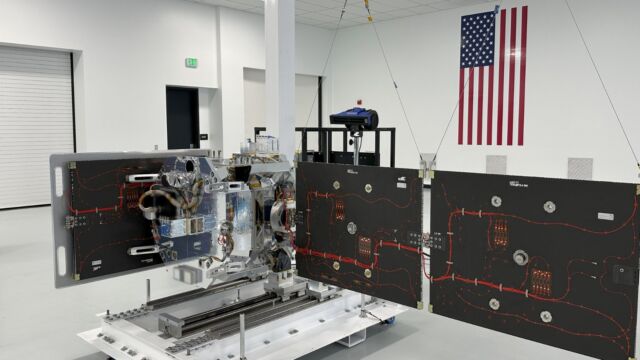The US Space Force announced Thursday it is partnering with two companies, Rocket Lab and True Anomaly, for a first-of-its-kind mission to demonstrate how the military might counter “on-orbit aggression.”
On this mission, a spacecraft built and launched by Rocket Lab will chase down another satellite made by True Anomaly, a Colorado-based startup. “The vendors will exercise a realistic threat response scenario in an on-orbit space domain awareness demonstration called Victus Haze,” the Space Force’s Space Systems Command said in a statement.
This threat scenario could involve a satellite performing maneuvers that approach a US spacecraft or a satellite doing something else unusual or unexpected. In such a scenario, the Space Force wants to have the capability to respond, either to deter an adversary from taking action or to defend a US satellite from an attack.
Going up to take a look
“When another nation puts an asset up into space and we don’t quite know what that asset is, we don’t know what its intent is, we don’t know what its capabilities are, we need the ability to go up there and figure out what this thing is,” said Gen. Michael Guetlein, the Space Force’s vice chief of space operations.
This is what the Space Force wants to demonstrate with Victus Haze. For this mission, True Anomaly’s spacecraft will launch first, posing as a satellite from a potential adversary, like China or Russia. Rocket Lab will have a satellite on standby to go up and inspect True Anomaly’s spacecraft and will launch it when the Space Force gives the launch order.
“Pretty sporty,” said Even Rogers, co-founder and CEO of True Anomaly.
Then, if all goes according to plan, the two spacecraft will switch roles, with True Anomaly’s Jackal satellite actively maneuvering around Rocket Lab’s satellite. According to the Space Force, True Anomaly and Rocket Lab will deliver their spacecraft no later than the fall of 2025.
“If a near-peer competitor makes a movement, we need to have it in our quiver to make a counter maneuver, whether that be go up and do a show of force or go up and do space domain awareness or understand the characterization of the environment—what’s going on?” Guetlein said.
Victus Haze is the next in a series of military missions dedicated to validating Tactically Responsive Space (TacRS) capabilities. With these efforts, the Space Force and its commercial partners have shown how they can compress the time it takes to prepare and launch a satellite.
Last year, the Space Force partnered with Firefly Aerospace and Millennium Space Systems on the Victus Nox mission. The Victus Nox satellite was built and tested in less than a year and then readied for launch in less than 60 hours. Firefly successfully launched the spacecraft on its Alpha rocket 27 hours after receiving launch orders from the Space Force, a remarkable achievement in an industry where satellites take years to build and launch campaigns typically last weeks or months.

“We no longer have the luxury of time to wait years, even 10 or 15 years, to deliver some of these capabilities.” Guetlein said in a discussion in January hosted by the Center for Strategic and International Studies. “A tactically relevant timeline is a matter of weeks, days, or even hours.”
“Victus Haze is about continuing to break those paradigms and to show how we would rapidly put up a space domain awareness capability and operate it in real time against a threat,” Guetlein said.
The Victus Haze mission is more complicated than Victus Nox, involving two prime contractors, two spacecraft, and two rocket launches from different spaceports, all timed to occur with short timelines “to keep the demonstration as realistic as possible,” a Space Force spokesperson told Ars.
“This demonstration will ultimately prepare the United States Space Force to provide future forces to combatant commands to conduct rapid operations in response to adversary on-orbit aggression,” Space Systems Command said in a statement.


